|
Read 13185679 times
Connect me to:
|
Lamb: A Ritual, Revered, and Reviled FoodLamb
Spring Volume: 2010 Issue: 17(1) page(s): 19, 20, and 21
Little is reported about this many named meat. Some call the meat mutton and the animals sheep, others simply call this family and its meat lamb. Dictionaries define sheep as the animal, mutton as the meat, and lamb as both baby animal and meat of the young. All are Ovis, the name of the genus; and all are not appreciated by many Chinese. Why? They claim they do not like its strong taste or its strong aroma. 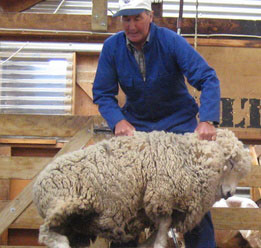 They probably do not know, perhaps do not care that lamb was the principle and one of the preferred meat sources in ancient China. It was the second preferred animal in religious sacrifices, the first was the ox. Probably folks in those early times ate the one they caught first, strong aroma and taste were of less importance. They probably do not know, perhaps do not care that lamb was the principle and one of the preferred meat sources in ancient China. It was the second preferred animal in religious sacrifices, the first was the ox. Probably folks in those early times ate the one they caught first, strong aroma and taste were of less importance.
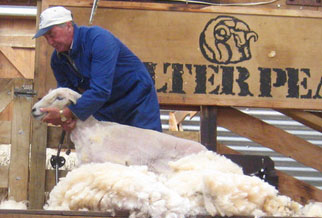 Not loved by all, the question still remains: Why did the use of this animal as a meat source decline? Few address the issue even though it impacts many, especially those in the south and the west of the country. Did lamb lose out because pregnant women would not eat it believing the old wive's tale that the infant growing in their bellies would have epilepsy? Not loved by all, the question still remains: Why did the use of this animal as a meat source decline? Few address the issue even though it impacts many, especially those in the south and the west of the country. Did lamb lose out because pregnant women would not eat it believing the old wive's tale that the infant growing in their bellies would have epilepsy?
There are other reasons, one that as meat became more readily available, lamb consumption declined as a way to separate the Han from Mongol and Muslim populations who love and consume lots of it. For them, it is their primary animal food. Others say they stopped eating older lamb, particularly, even did not wear any clothes made from its fur. Sheep when shorn have lots of wool, as can be seen in the two pictures on this page, a before and after a shearing. But what do they do with the wool? The southern Chinese we spoke to confirm eating little to no lamb and not wearing things made of its wool. Is it all exported? Neither issue seems to bother the Han, they just ignore lamb and its wool. Other minority populations living in China's northeastern regions do not, they love this animal. It is a conspicuous food on their tables, made into items of their clothing, and it is a fabric found in their homes. Eating lamb or mutton did not bother ancient Chinese but does not bother them now, so why does it get ignored now by the Han Chinese? 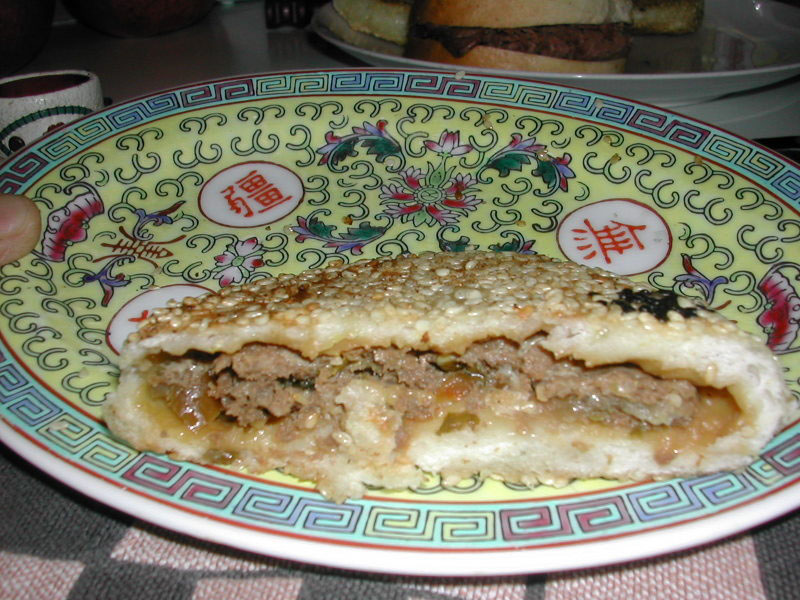 Actually, in days gone by, the rich adored lamb, especially women who donned fur coats made from the skins of these animals, some even wearing them to their ever popular lamb hotpot dinners. It did not bother the men either. They wore hats and coats made of lamb skin lined with the fur, they ate the meat, and they imbibed something called 'mutton wine.' Actually, in days gone by, the rich adored lamb, especially women who donned fur coats made from the skins of these animals, some even wearing them to their ever popular lamb hotpot dinners. It did not bother the men either. They wore hats and coats made of lamb skin lined with the fur, they ate the meat, and they imbibed something called 'mutton wine.'
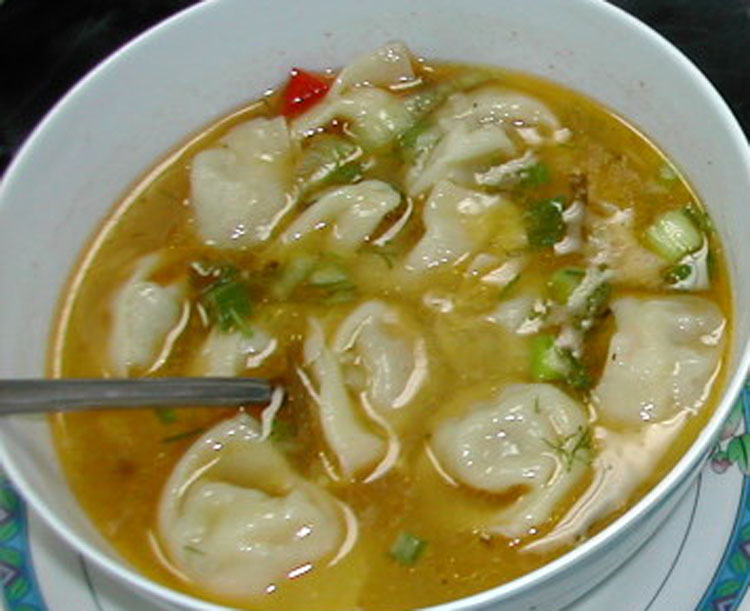 Should you wonder how and from where we learned about early use of these wooly animals? Sheep and lamb are mentioned in the Li Qi or Book of Rites, circa 1300 BCE. It indicates they were served in the Spring. Reading poems in the Shi Qing or the Book of Songs, circa 1000 BCE, lamb is mentioned in no fewer than eight poems. In the Director of Victuals for Meng Shu Kingdom, also known as the Important Arts of the People's Welfare done in 544CE, dining on lamb is discussed. Lamb fat is located in Han tombs, and during Han Dynasty times (206 BCE - 220 CE) there are reports of lamb fried in beef tallow and goose fried in lamb tallow. Should you wonder how and from where we learned about early use of these wooly animals? Sheep and lamb are mentioned in the Li Qi or Book of Rites, circa 1300 BCE. It indicates they were served in the Spring. Reading poems in the Shi Qing or the Book of Songs, circa 1000 BCE, lamb is mentioned in no fewer than eight poems. In the Director of Victuals for Meng Shu Kingdom, also known as the Important Arts of the People's Welfare done in 544CE, dining on lamb is discussed. Lamb fat is located in Han tombs, and during Han Dynasty times (206 BCE - 220 CE) there are reports of lamb fried in beef tallow and goose fried in lamb tallow.
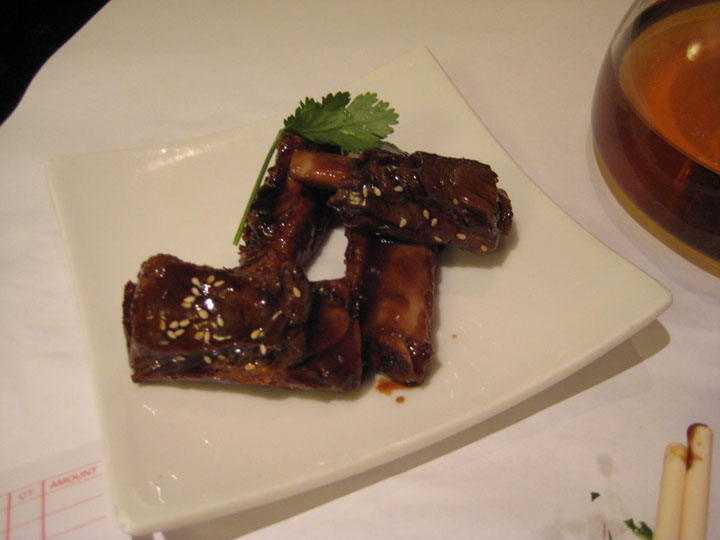 In addition to these, prepared meat pastes were made of lamb. It was simmered with red fermented rice and wine, and cut in slices, then served. There are recipes for red pot-roasted lamb, even lamb made in dough with scallions, soy sauce, and salt. These are simply called 'meat In addition to these, prepared meat pastes were made of lamb. It was simmered with red fermented rice and wine, and cut in slices, then served. There are recipes for red pot-roasted lamb, even lamb made in dough with scallions, soy sauce, and salt. These are simply called 'meat
|

 They probably do not know, perhaps do not care that lamb was the principle and one of the preferred meat sources in ancient China. It was the second preferred animal in religious sacrifices, the first was the ox. Probably folks in those early times ate the one they caught first, strong aroma and taste were of less importance.
They probably do not know, perhaps do not care that lamb was the principle and one of the preferred meat sources in ancient China. It was the second preferred animal in religious sacrifices, the first was the ox. Probably folks in those early times ate the one they caught first, strong aroma and taste were of less importance. Not loved by all, the question still remains: Why did the use of this animal as a meat source decline? Few address the issue even though it impacts many, especially those in the south and the west of the country. Did lamb lose out because pregnant women would not eat it believing the old wive's tale that the infant growing in their bellies would have epilepsy?
Not loved by all, the question still remains: Why did the use of this animal as a meat source decline? Few address the issue even though it impacts many, especially those in the south and the west of the country. Did lamb lose out because pregnant women would not eat it believing the old wive's tale that the infant growing in their bellies would have epilepsy? Actually, in days gone by, the rich adored lamb, especially women who donned fur coats made from the skins of these animals, some even wearing them to their ever popular lamb hotpot dinners. It did not bother the men either. They wore hats and coats made of lamb skin lined with the fur, they ate the meat, and they imbibed something called 'mutton wine.'
Actually, in days gone by, the rich adored lamb, especially women who donned fur coats made from the skins of these animals, some even wearing them to their ever popular lamb hotpot dinners. It did not bother the men either. They wore hats and coats made of lamb skin lined with the fur, they ate the meat, and they imbibed something called 'mutton wine.' Should you wonder how and from where we learned about early use of these wooly animals? Sheep and lamb are mentioned in the Li Qi or Book of Rites, circa 1300 BCE. It indicates they were served in the Spring. Reading poems in the Shi Qing or the Book of Songs, circa 1000 BCE, lamb is mentioned in no fewer than eight poems. In the Director of Victuals for Meng Shu Kingdom, also known as the Important Arts of the People's Welfare done in 544CE, dining on lamb is discussed. Lamb fat is located in Han tombs, and during Han Dynasty times (206 BCE - 220 CE) there are reports of lamb fried in beef tallow and goose fried in lamb tallow.
Should you wonder how and from where we learned about early use of these wooly animals? Sheep and lamb are mentioned in the Li Qi or Book of Rites, circa 1300 BCE. It indicates they were served in the Spring. Reading poems in the Shi Qing or the Book of Songs, circa 1000 BCE, lamb is mentioned in no fewer than eight poems. In the Director of Victuals for Meng Shu Kingdom, also known as the Important Arts of the People's Welfare done in 544CE, dining on lamb is discussed. Lamb fat is located in Han tombs, and during Han Dynasty times (206 BCE - 220 CE) there are reports of lamb fried in beef tallow and goose fried in lamb tallow. In addition to these, prepared meat pastes were made of lamb. It was simmered with red fermented rice and wine, and cut in slices, then served. There are recipes for red pot-roasted lamb, even lamb made in dough with scallions, soy sauce, and salt. These are simply called 'meat
In addition to these, prepared meat pastes were made of lamb. It was simmered with red fermented rice and wine, and cut in slices, then served. There are recipes for red pot-roasted lamb, even lamb made in dough with scallions, soy sauce, and salt. These are simply called 'meat